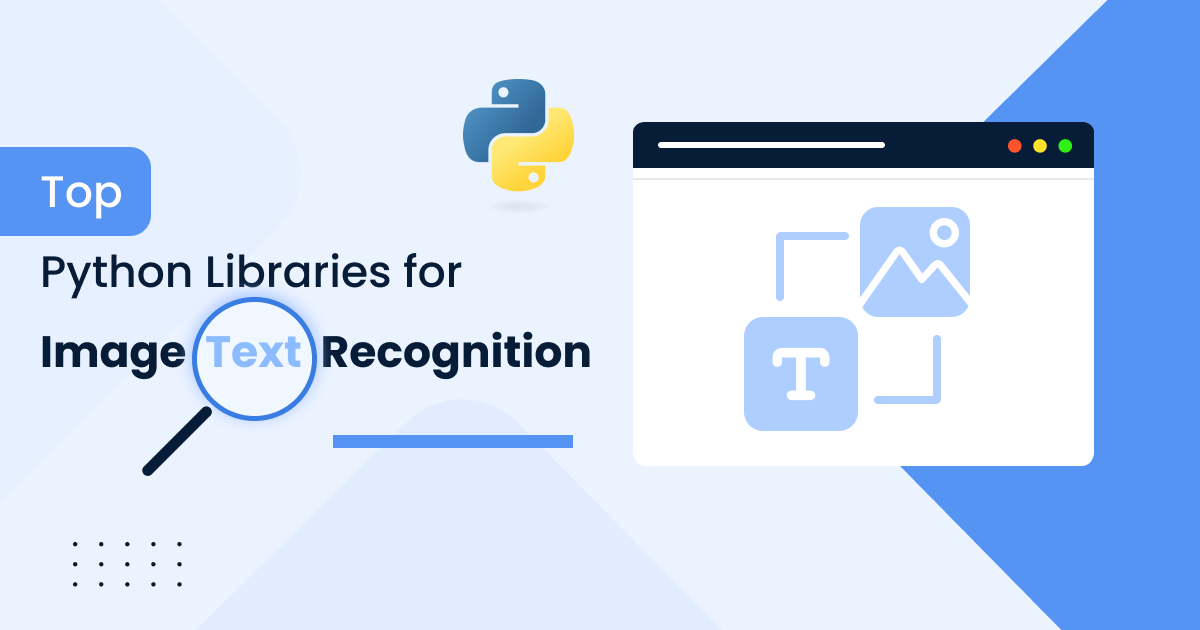Finding and correcting errors in your JavaScript requires a very systematic approach and lots of patience. It may require setting up some basic error-catching blocks in the code, which may be time-consuming but highly effective.
However, we have ways of finding and correcting errors in your JavaScript code much faster. For instance, you can get help from internet script validators, which are cost-free and automate the entire process of finding and correcting your errors so that you do not need to spend much time on it.
This article will encompass all the possible steps to find and fix errors in your JavaScript code in no time. So, let’s get started.
Common Pitfalls While Writing JavaScript
Below, we want to cover some common errors that programmers make of varying skill levels. Review these mistakes to learn about the issues you are prone to make in your coding sessions to become more productive.
1. Using Undeclared Variables
Undeclared variables can be a common issue but are easily fixable by analyzing the created JavaScript. However, finding these issues can be painstaking and tiring for longer lines of code.
Example:
x = 10; // No 'var', 'let', or 'const'
console.log(x);The above code will cause problems as the variable x is not declared as ‘int’, ‘const’, or any other type.
Fix:
"use strict";
let x = 10;
console.log(x);Implement the script’s ‘use strict’ mode to catch undeclared variables during compilation. Secondly, use the ‘let’ keyword to define its type in the code and fix the error.
2. Incorrect Use of Operators
Java beginners who are new to the coding environment often commit this mistake. However, professional developers can also fall prey to this pitfall when they’re in a hurry.
Example:
if ("5" == 5) {
console.log("This will run because of type coercion.");
}The above code will cause problems as the equality operator is used as ‘==’ instead of ‘===’ the correct version.
Fix:
if ("5" === 5) {
console.log("This will not run because types are different.");
}Debug carefully, or use linters to enforce ‘===’ in your JavaScript code and fix unnecessary operator problems when possible.
3. Accessing Properties of Undefined or Null Variables
When variables are left undefined or null, accessing their values can return TypeError.
Example:
let obj = null;
console.log(obj.name); // Error: Cannot read property 'name' of nullSince obj is defined as null, the interpreter cannot read its property ‘name.’
Fix:
let obj = null;
if (obj) {
console.log(obj?.name);
} else {
console.log("Object is null or undefined.");
}The third line in the code is the game-changer in this fix. Using optional chaining (?.) enables safer access to variables’ values, avoiding errors in the JavaScript.
4. Mismanaging Asynchronous Code
Failing to await an asynchronous code is more like an amateur to semi-pro-level mistake. This pitfall leads to unexpected behavior from JavaScript.
Example:
async function fetchData() {
return "Data fetched!";
}
let data = fetchData(); // Returns a Promise, not the data
console.log(data); // Outputs: Promise {<fulfilled>: 'Data fetched'}Here, there is no await command. So, the promise is fetched but the data is still not there.
Fix:
async function fetchData() {
return "Data fetched!";
}
let data = await fetchData();
console.log(data); // Outputs: Data fetched!
Always use the ‘await’ or ‘.then()’ commands to handle promises in JavaScript. Or, use linters like the javascript validator to quickly find errors in the code and fix them for you immediately without wasting time.
5. Infinite Loops
While professional developers are always prone to errors, the infinite loop problem is more of a beginner issue. It occurs when a loop is not closed or satisfied with a condition, leading to unlimited code runs.
Example:
let i = 0;
while (true) {
console.log(i); // Runs forever
}There’s no increment in the value of variable i. Hence, the interpreter will get stuck to this portion of the code since it doesn’t know when to stop with the given condition (variable i will always remain 0.)
Fix:
let i = 0;
while (i < 10) {
console.log(i);
i++;
}Much better now. The while-loop has a genuine condition, and a counter is placed for variable i, which allows it to increment in each iteration.
Quick Ways to Find and Fix JavaScript Errors
After reviewing some common pitfalls, it is time to discuss some strategies that can allow you to find and fix errors with Java scripts in no time.
- Use Browser Developer Tools
Using browser developer tools can be a quick way to find and fix errors with JavaScript code. However, for developers seeking different approaches, exploring top JavaScript alternatives can also be a viable solution for specific use cases. Today, most web browsers come built-in with a JavaScript console and debugger.
To open up the console, run the JavaScript on Google Chrome or Microsoft Edge. Then, press F12 or Ctrl + Shift + I. This will open up the console where problematic code will be highlighted in red.
Click on the error messages in red to navigate to the problematic part of the code and fix the issues immediately.
- Modularize and Isolate Bugs
Another good practice for error-finding is to modularize the codes. This means breaking down the code into smaller, independent functions, allowing you to isolate bugs.
Example:
// Modularized code
function add(a, b) {
if (typeof a !== "number" || typeof b !== "number") {
throw new Error("Inputs must be numbers.");
}
return a + b;
}
function subtract(a, b) {
if (typeof a !== "number" || typeof b !== "number") {
throw new Error("Inputs must be numbers.");
}
return a - b;
}
function calculate(a, b, operation)
if (operation === "add") return add(a, b);
if (operation === "subtract") return subtract(a, b);
throw new Error("Invalid operation");
}
// Testing functions in isolation
try {
console.log(add(3, 5)); // Outputs: 8
console.log(subtract(10, 4)); // Outputs: 6
console.log(calculate(7, 2, "add")); // Outputs: 9
console.log(calculate(7, 2, "divide")); // Throws error: Invalid operation
} catch (error) {
console.error(error.message);
}The above code was modularized by using separate functions. Later, each one was checked in isolation using a try-catch block.
- Use Debugger Breakpoints
Putting in debugger breakpoints pauses the execution of the JavaScript for a bit when the browser’s dev tools are open. The said strategy allows you to inspect variables and correct a problem before it proceeds to the main logic.
The technique is also useful for viewing the call stack and stepping through your code line-by-line to identify and fix bugs.
Example:
function calculate(a, b) {
debugger; // Pauses execution here
return a + b;
}
calculate(2, 3);The above example uses a debugger in a function that adds two variables. It makes it quite easy for the programmer to catch and fix errors in their code.
- Handle Common Errors
Some common types of errors associated with making .js files need context for better handling. These are primarily called: ReferenceError, TypeError, SyntaxError, and Logical Errors.
TypeError mostly occurs when the interpreter has to operate on two variables with incompatible data types [see common pitfall 2.] Using typeof can fix this issue.
Syntax errors occur when the code cannot be parsed due to a missing brace, bracket, or semi-colon. Double-check the syntax before finally running the script. Or, use JavaScript validators, like the one we mentioned before, to find and fix problems quickly.
Finally, logic errors occur when the code runs but produces incorrect results. This can be avoided by adding console.log() to continuously see outputs from the script or testing the code with smaller inputs.
Example:
function getUserData(userId) {
if (!userId) {
console.log(user.id); // ReferenceError: user is not defined
}
return "Data for user: " + userId.toUpperCase(); // TypeError if userId is not a string
}
console.log(getUserData()); // referenceError or logical errorsThis code has multiple types of errors. Let’s see the solution below.
Fix:
function getUserData(userId) {
if (!userId) {
throw new ReferenceError("userId is required.");
}
if (typeof userId !== "string") {
throw new TypeError("userId must be a string.");
}
return "Data for user: " + userId.toUpperCase();
}
try {
console.log(getUserData(123)); // Throws TypeError
} catch (error) {
console.error("Error:", error.message);
}
try {
console.log(getUserData()); // Throws ReferenceError
} catch (error) {
console.error("Error:", error.message);
}
console.log(getUserData("johnDoe")); // Outputs: Data for user: JOHNDOE- Test Edge Cases
The final tip we can provide you to find and fix errors in your JavaScript code quickly is to test edge cases. This means ensuring your code is robust on boundary values and handles errors gracefully.
Example:
function isWithinRange(num, min, max) {
return num >= min && num <= max;
}
// Test cases
console.log(isWithinRange(5, 1, 10)); // Outputs: true
console.log(isWithinRange(1, 1, 10)); // Outputs: true (boundary value)
console.log(isWithinRange(10, 1, 10)); // Outputs: true (boundary value)
console.log(isWithinRange(0, 1, 10)); // Outputs: false
console.log(isWithinRange(11, 1, 10)); // Outputs: falseUsing dummy values that represent the end of the range of a defined function or logic lets you know if you’re on the right track or not. Hence, you’ll be able to catch and fix errors and keep your workflow fluid.
Wrapping Up
Finding and fixing errors in JavaScript codes can be a hassle if you don’t know the basics of the language. We recommend starting learning through an online course, hiring a tutor, or looking for documentation and projects on the web to enhance your learning.
If you feel that the basics aren’t an issue and want to elevate your functionalities with Java scripts to the next level, then exploring top JavaScript libraries can be a game-changer. Try using linters and validator tools that we’ve mentioned in this article to fix errors with the code in no time!”







